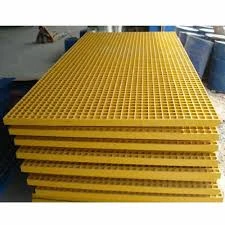loading...
- No. 9, Xingyuan South Street, Dongwaihuan Road, Zaoqiang County, Hengshui, Hebei, China
- admin@zjcomposites.com
- +86 15097380338
- Welcome to visit our website!
frp molded grating
FRP Molded Grating An Innovative Solution for Modern Infrastructure
In recent years, the demand for lightweight, durable, and corrosion-resistant materials in various sectors has spurred the development of advanced engineering solutions. One notable innovation is FRP (Fiber Reinforced Polymer) molded grating, which has become a popular choice across industries such as construction, wastewater treatment, and chemical processing. This article explores the key characteristics, benefits, applications, and future prospects of FRP molded grating, highlighting its role as an innovative solution for modern infrastructure.
Understanding FRP Molded Grating
FRP molded grating is a composite material made from fiberglass reinforced polymer. The construction involves a process where glass fibers are embedded in a polymer matrix, creating a lightweight yet robust structure. The molding process allows for the creation of textured surfaces that enhance slip resistance, making it an ideal choice for environments where safety is paramount.
Key Characteristics
1. Corrosion Resistance One of the standout features of FRP molded grating is its exceptional resistance to corrosion. Unlike traditional materials like steel and wood, FRP does not rust or rot when exposed to harsh chemicals or moisture. This property makes it particularly advantageous for use in chemical plants, marine environments, and wastewater facilities.
2. Lightweight Weighing significantly less than steel, FRP molded grating is easier to handle and install. This reduction in weight not only lowers transportation costs but also lessens the structural load on supports and frameworks.
3. High Strength-to-Weight Ratio FRP offers remarkable tensile strength, allowing it to withstand heavy loads while remaining lightweight. This combination is particularly beneficial in applications requiring high load-bearing capabilities without the bulk of traditional materials.
4. Durability The longevity of FRP molded grating is another key characteristic. Resistant to UV radiation and weathering, it maintains its structural integrity and aesthetic appeal over time, reducing the need for frequent replacements.
5. Customizability FRP molded grating can be manufactured in a variety of sizes, shapes, and colors to meet specific project requirements. This versatility enables architects and engineers to incorporate the material seamlessly into diverse design aesthetics.
frp molded grating

Benefits of FRP Molded Grating
The advantages of using FRP molded grating are multifaceted. First, its resistance to corrosion and chemicals contributes to lower maintenance costs and prolonged service life. Facilities can operate with reduced downtime, improving overall productivity.
Secondly, the lightweight nature of FRP means quicker installation times, which is crucial in time-sensitive projects. Construction teams can complete projects faster and more efficiently, maintaining project schedules and budgets.
Moreover, the slip-resistant surface of FRP grating enhances safety in environments prone to spills or moisture, such as industrial floors, walkways, and platforms. By minimizing the risk of accidents, businesses can protect their employees and reduce liability concerns.
Applications of FRP Molded Grating
FRP molded grating finds applications across various industries. In wastewater treatment plants, it is used for walkways, trench covers, and platforms, where it constantly faces exposure to corrosive substances. In the chemical industry, it supports chemical processing equipment and storage areas, ensuring safety and compliance with stringent regulations. Additionally, in the construction sector, FRP grating is utilized in platforms, stair treads, and as flooring for buildings that require a lightweight yet robust flooring solution.
Future Prospects
The future of FRP molded grating appears promising, with an increasing emphasis on sustainable and efficient materials in construction and infrastructure development. As governments and industries worldwide focus on reducing environmental impact, materials like FRP offer an eco-friendly alternative that aligns with these goals. Research and development in FRP technology continue to evolve, potentially leading to even more innovative applications and formulations.
In conclusion, FRP molded grating is not just a material; it is a testament to the advancements in engineering that prioritize durability, safety, and efficiency. Its unique properties cater to a diverse range of applications, promising a significant role in the future of infrastructure development. As industries continue to embrace smart materials, FRP molded grating stands out as a leading option for meeting modern construction challenges.
-
The Rise of FRP Profiles: Strong, Lightweight, and Built to LastNewsJul.14,2025
-
SMC Panel Tanks: A Modern Water Storage Solution for All EnvironmentsNewsJul.14,2025
-
GRP Grating: A Modern Solution for Safe and Durable Access SystemsNewsJul.14,2025
-
Galvanized Steel Water Tanks: Durable, Reliable, and Ready for UseNewsJul.14,2025
-
FRP Mini Mesh Grating: The Safer, Smarter Flooring SolutionNewsJul.14,2025
-
Exploring FRP Vessels: Durable Solutions for Modern Fluid HandlingNewsJul.14,2025
-
GRP Structures: The Future of Lightweight, High-Performance EngineeringNewsJun.20,2025
